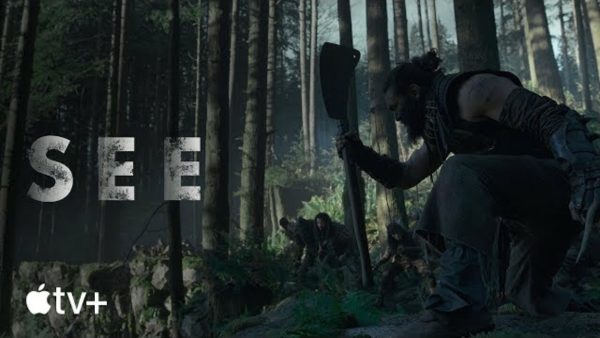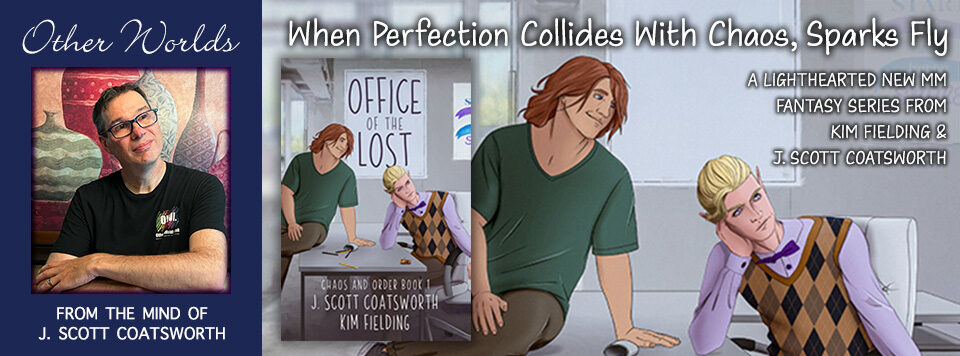
I just finished the final season of an amazing post-apocalyptic fantasy TV series called “See.” If you haven’t heard from it, it’s a high-concept tale that’s on Apple TV.
The concept? A pandemic (yeah, I know) wiped out everyone’s ability to see. And a few hundred years later, the remaining population has learned to live without sight. Suddenly children are once again being born with the ability to see, but they are hunted and hounded as witches for the ability they were born with.
I avoided watching this show for a long time because it looked a bit like “Conan the Barbarian: – too savage for my tastes. And don’t get me wrong. There is a lot of violence in this post-apocalyptic world, as our hero (played beautifully by Jason Mamoa) tries to carve out a safe space for his family, including his two sighted step-children.
The show takes place in what used to be Western Pennsylvania and Ohio, in the kingdom of Paia. There’s a really cool map here:
See Map: https://www.postapocalypticmedia.com/map-of-real-world-locations-in-see-on-apple-tv/
…that lists where many of the locations in the show are in real life, and even some that retained their current names (hello Altoona) in this strange future. Oh, and Pittsburgh is there too, in the second and third seasons, but has been renamed Trivantes.
The story opens with an assault on a small mountain village, home to the Alkenny people (think Allegheny forest), where a woman named Maghra is giving birth to twins in the midst of an attack.
She’s aided by a seer named Paris (played to perfection by the amazing Alfre Woodard). The village is under assault by the witch finder Tamacti Jun and his army, who have been sent by the deliciously vile and evil queen Sibeth to hunt down Jerlamarel (I had to look up so many name spellings for this review that it’s not even funny LOL), a sighted man who fled the kingdom. After a narrow escape, the Alkenny are on the run for their lives, taking the two sighted babies with them.
There are so many reasons I loved this show. The first is the epic rivalry between the two main female characters, Sibeth and Maghra. Sibeth (aka Queen Kane, played to insane perfection by Sylvia Hoeks – you should see how she “worships” her god) is as twisted a ruler as you’ll ever find, willing to destroy anyone and anything to stay alive and keep her power. Because it’s impossible to read facial emotions without using touch, the blind seem unaware of how much they give away to the sighted with their expressions and silent reactions, and Hoeks plays this to the hilt with Sibeth.
Maghra is her polar opposite – kind, strong, and a fierce defender of her own children and people. The tension in the first season between herself and her sighted children flows naturally into the story, creating beautiful and tragic moments as she begins to realize they live in an entirely different world than her own.
The women of See are uniformly fascinating and steal every scene they inhabit. I loved Bow Lion, an enigmatic shadow walker who has the ability to haunt the Alkenny camp and discover everyone’s secrets without being discovered, though training and the use of dried mud to mask her smell – that is, until the sighted arrive on the scene.
Paris is the tribe’s wise woman, and Woodard sinks her teeth into the role, especially when she’s allowed to have a life of her own a little later in the series.
And Maghra’s daughter Haniwa is a bundle of contradictions, strong and weak, headstrong and fearful, trying to find a place as a sighted woman (after the show leaps forward in time) amongst the blind.
Her brother, Kofun, on the other hand, is more of a mess, getting himself into situations that put his entire family in jeopardy. He and Haniwa also evolve very different ideas about what it means to be sighted in a blind world.
And that’s the crux of the show. See offers viewers a fully-realized world of the blind. Villages are constructed with buildings all alike, with ropes connecting them so that folks can easily find their way around. They’ve learned how to do most everything their society needs to survive (though one of my few minor beefs is the fact that their clothing is so often nicely color co-ordinated – how do they do that without sight?).
One of the most fascinating things in the show is how battles are prosecuted – the show runners and writers obviously took a huge amount of time to figure out how the blind would fight one another. They use ropes with grappling hooks to locate and pull in their enemies closer, for instance, and halt the fighting to hear where the other side’s soldiers are. Baba Voss (Momoa, stepfather to the twins) in particular has a gift for finding his enemies without sight.
The violence, while often explicit and terrible, is also a thing of strange beauty, especially with Momoa, who moves through battle scenes like a dancer with a sword. While not for the squeamish, there’s a grim satisfaction in watching Baba Voss mete out justice – and his deep love for his step children Haniwa and Kofun was one of the best parts of the show.
Of course, the introduction of the sighted throws all of this into turmoil, no more so than when the Trivantes attack Paia, and a ten-year-old sighted boy directs the slaughter of hundreds of Paian troops.
One other minor quibble – at times, the blind cross rooms and move through new places with no hesitation, as the sighted would, and there’s no explanation given for this. That’s a minor thing, especially when set against the scope and daring of the show and its creators.
See features some amazing reveals throughout its three season run – I won’t go into detail on these, because I don’t want to spoil the fun. But the whole thing is turned upside down a few times as events transpire to raise the low and humble the mighty.
My final quibble… this show is filled with magnificently evil characters – all of whom have reasons for their actions that lend them depth that’s sometimes missing from villains. But sometimes they just need to be killed already to make the world a better place, and too often the “good” characters just let them go, leading to more bloodshed down the road.
I loved the small details the show so lovingly provides. The fact that the blind can’t even conceive of a ship, let alone navigate one down a river or across a lake or sea. The restored apartment that Wren shows Haniwa in Trivantes, which is the first time she “sees” what’s truly possible with the power of sight. And the way the blind find to use the sighted to bring back some of the worst parts of the pre-pandemic days.
There are also many nods to our own time. some of which can only be fully appreciated by the sighted characters, like an overgrown parking lot full of rusted-out cars, and other bits of our modern culture that filter through. Or a library of books kept in a prison, and a phonograph playing an old song inside a desolate concrete dam.
I groused after watching the first season about the lack of LGBTQ+ representation, but the season two ushered in a great lesbian couple who is at the heart of the series, and there are suggestions that others in the cast might fall somewhere along the rainbow spectrum too.
See is a fascinating, if occasionally flawed show. It doesn’t pull its punches with the characters we lose along the way, but each death serves to punctuate the dire situation our heroes find themselves in, and moves the story forward.
Oh, and there’s a heartbreakingly beautiful use of the song Let the River Flow near the end of the series that WILL make you cry. It even stopped Mark in his tracks when he heard it as he entered the room.
See is unlike anything else I have ever seen – always a high compliment from me. It questions everything, and takes us on an adventure that ends on a bright and shining high note, after a long journey though the shadows of the blind. And it’s nicely set up to allow a spin-off (please please please!), should Apple and the creators be so inclined.
So watch this show (and close your eyes during the many fight scenes, if that’s not your thing). You’ll be glad you did.
